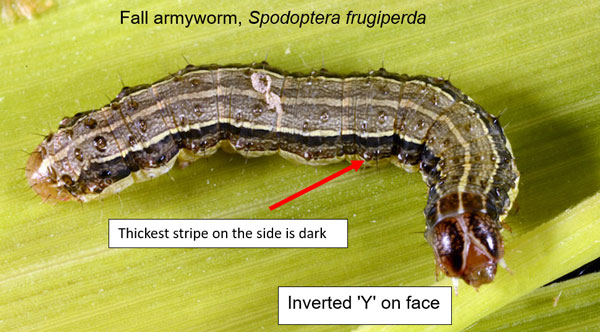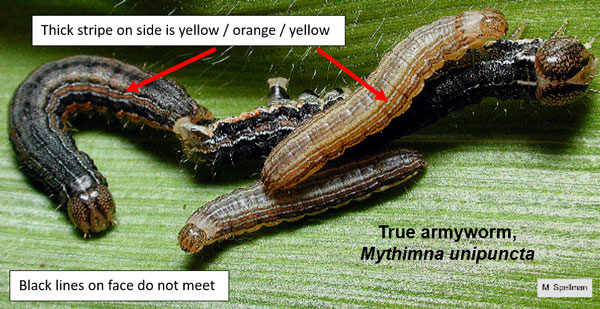There have been some heavy infestations of fall armyworms in early-planted wheat in Ellis County, with some plantings completely destroyed, and the larvae trying to finish up on the pigweeds. This is a very asynchronous, late generation of fall armyworm, with most larvae now almost mature, but some still quite small. Treatment will not be justified at this point. The best recommendation is to just wait until worms have finished feeding, recalling that larvae can “march” across to new fields after killing plants. If larvae are still active in adjacent fields, it will be best to wait until later in the planting window (up to 2nd week of October for Ellis County). The emerging moths should migrate south without laying any more eggs.
There have been many reports across the Midwest of large fall armyworm populations damaging crops, lawns and turf, so they are having a good year. There were some reports of true armyworms also. The color of these caterpillars is highly variable; the dark color depends on melanin deposition, which can increase at low temperatures, and the intensity of bright colors depends on plant pigments obtained in the diet. To help distinguish between these two worms, refer to the features identified in photos shown below.

Figure 1. Fall armyworm showing key identifying features. Photo by J. Obermeyer.

Figure 2. True armyworm with key identifying features. Photo by M. Spellman.
J.P. Michaud, Entomologist – Agricultural Research Center, Hays
jpmi@ksu.edu